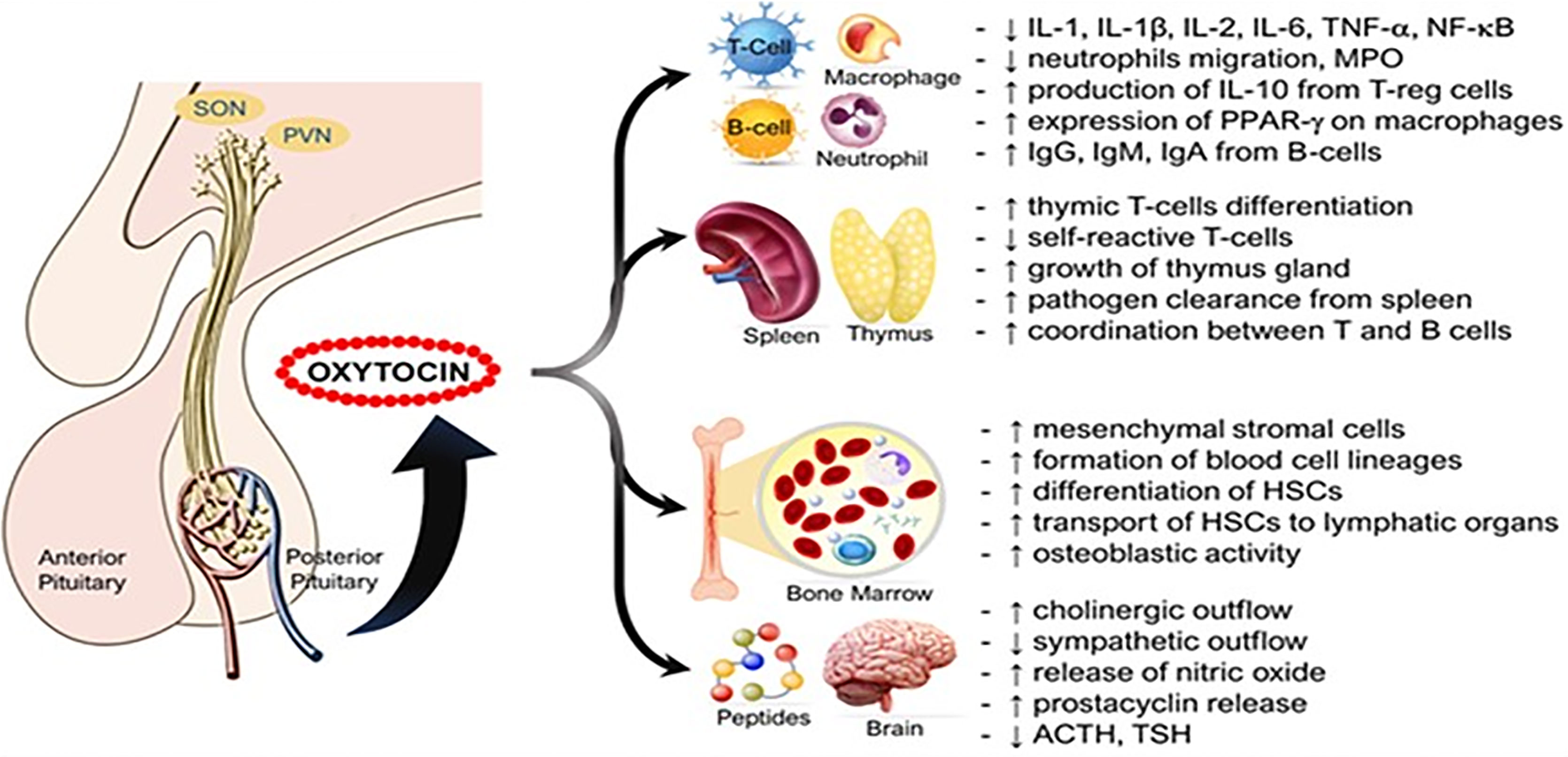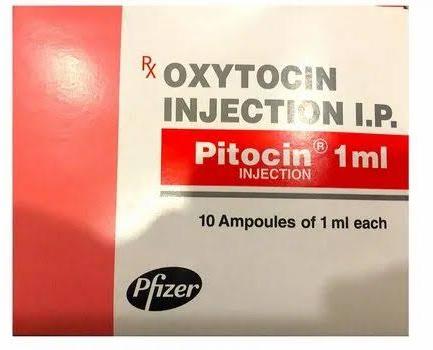Is Oxytocin Natures Medication?
페이지 정보
작성자 Theron 댓글 0건 조회 15회 작성일 24-11-26 07:01본문
In the medical setup, the V2R agonist desmopressin displays related adverse effects consisting of hyponatremia and kidney water retention. Whereas we did not observe comparable negative results during our studies, our next round of chemical optimization is concentrated on making molecules with no considerable V1aR and V2R activating potential. Lorry, native OXT, and ASK1476 treatments were injected once daily at beginning of dark cycle by means of subcutaneous shot using a 1 cc 29G insulin syringe for raised dosage accuracy.
 No effect of therapy was seen during 7-day saline therapy and 7-day 2% HP-CD/saline remedy treatment at 1 mL/kg. Baseline data utilized for team job in the long-term (28-day) lorry vs. ASK1476 vs. OXT experiment. Teams were well matched without distinction in body weight at start of treatment (A), average everyday body weight adjustment throughout 7-day standard stage (B), and average daily food intake during 7-day standard phase (C).
No effect of therapy was seen during 7-day saline therapy and 7-day 2% HP-CD/saline remedy treatment at 1 mL/kg. Baseline data utilized for team job in the long-term (28-day) lorry vs. ASK1476 vs. OXT experiment. Teams were well matched without distinction in body weight at start of treatment (A), average everyday body weight adjustment throughout 7-day standard stage (B), and average daily food intake during 7-day standard phase (C).
However, OXT's brief half-life in circulation and lack of receptor selectivity limitation its application and efficacy. In this study, we report an OXT peptide analog (OXTGly) that is powerful and selective for the OXT receptor (OXTR). OXT, yet not OXTGly, turned on vasopressin receptors artificial insemination and Oxytocin and Love acutely boosted high blood pressure in vivo when provided IP. OXT suppressed food intake in mice, whereas OXTGly had a modest result on food intake when carried out IP or intracerebroventricularly. Both OXT (IP) and OXTGly (IP) boosted glycemic control in glucose resistance examinations. In addition, both OXT (IP) and OXTGly (IP) promoted insulin, glucagon-like peptide 1, and glucagon secretion in mice.
The boost in plasma OT levels unavoidably involves OT receptors expressed throughout the body15 and might affect indirectly on mind feature and behavior. These mechanisms could make up the results of peripherally administered OT (e.g. intravenous infusion) on behaviour21,22,23,24. While our findings follow the concept that nose-to-brain paths could add to some of the modifications in rCBF generated by intranasal OT, our research can not illuminate the precise mechanisms underlying these results. Study in rats and apes has actually revealed that molecules provided intranasally can be transferred to the olfactory bulb within a time-frame of 45-- 90 min54,55, and potentially much faster56,57,58. A recent comparison of intranasal and intravenous administration of a brand-new OT receptor tracer in mice sustained this hypothesis by showing uptake of the intranasally provided tracer to the olfactory light bulb, Oxytocin and Love while increases in this area after the intravenous management of the tracer were almost negligible59. The increases of the concentration of the tracer in the olfactory bulb following its intranasal management could be observed as soon as 30 min post-dosing, which fits the time-frame of the results we report in our research.
I Oxytocin and Love And The Healing Of Damaged Cells
In 2nd trimester abortion, oxytocin infusion will usually achieve success in emptying the womb. For instance, Oxytocin Receptors plasma degrees in 10 expecting females at term obtaining a 4 milliunits per min intravenous infusion were 2 to 5 microunits/mL. Upon discontinuation of the mixture, or adhering to a considerable decrease in the infusion rate, e.g. in the event of overstimulation, uterine activity declines swiftly however might continue at a sufficient reduced degree. Mixture at doses ideal for induction or enhancement of work, the uterine reaction sets in slowly and typically reaches a steady state within 20 to 40 minutes. The matching plasma degrees of oxytocin approach those measured throughout spontaneous first-stage labour. As there is a vast variant in uterine sensitivity, uterine spasm may be created in some instances by what are generally taken into consideration to be reduced Safe Hormone Doses.
Web Links To Ncbi Databases
To exclude the opportunity that the lack of a result of OXTGly is because of its lack of ability to access mind regions in charge of food consumption regulation, we directly infused OXTGly right into the central nerve system by means of ICV shot and determined its result on food intake in 4-week-old 16-hour fasted male C57BL/6 computer mice. Whereas OXT (3 μg per computer mouse, ICV) acutely reduced food intake at 1 hour after application, OXTGly (3 μg per computer mouse, ICV) did not generate any kind of impact on food intake whatsoever the moment factors gauged [67] Lastly, we tested whether the long-acting acylated-OXTGly affected food intake. 3E, therapy with numerous dosages of acylated-OXTGly (IP) did not affect food consumption in 16-hour fasted computer mice. Consistent with these information in mice, we likewise located that OXT (IP), but not OXTGly (IP), therapy dose-dependently caused decreased food intake in DIO rats [67]
A mid-abdominal incision was executed and the electric transmitter (model TA11PA-C40; Information Sciences International, St. Paul, MN) was sutured to the inside of abdominal muscles. The catheter of the transmitter was punched and gone through the abdominal area right into the left femoral triangle making use of a 14-gauge, 1.5-inch syringe needle as a trocar, adhered to by insertion into the femoral artery approximately concerning 5 cm till getting to the position of the renal arteries. The transmitter was fixed within the peritoneal tooth cavity by suturing to the stomach muscles. The proximal stitch was connected around the vessel and catheter, and the distal suture was linked about the catheter to protect.
 No effect of therapy was seen during 7-day saline therapy and 7-day 2% HP-CD/saline remedy treatment at 1 mL/kg. Baseline data utilized for team job in the long-term (28-day) lorry vs. ASK1476 vs. OXT experiment. Teams were well matched without distinction in body weight at start of treatment (A), average everyday body weight adjustment throughout 7-day standard stage (B), and average daily food intake during 7-day standard phase (C).
No effect of therapy was seen during 7-day saline therapy and 7-day 2% HP-CD/saline remedy treatment at 1 mL/kg. Baseline data utilized for team job in the long-term (28-day) lorry vs. ASK1476 vs. OXT experiment. Teams were well matched without distinction in body weight at start of treatment (A), average everyday body weight adjustment throughout 7-day standard stage (B), and average daily food intake during 7-day standard phase (C).However, OXT's brief half-life in circulation and lack of receptor selectivity limitation its application and efficacy. In this study, we report an OXT peptide analog (OXTGly) that is powerful and selective for the OXT receptor (OXTR). OXT, yet not OXTGly, turned on vasopressin receptors artificial insemination and Oxytocin and Love acutely boosted high blood pressure in vivo when provided IP. OXT suppressed food intake in mice, whereas OXTGly had a modest result on food intake when carried out IP or intracerebroventricularly. Both OXT (IP) and OXTGly (IP) boosted glycemic control in glucose resistance examinations. In addition, both OXT (IP) and OXTGly (IP) promoted insulin, glucagon-like peptide 1, and glucagon secretion in mice.
The boost in plasma OT levels unavoidably involves OT receptors expressed throughout the body15 and might affect indirectly on mind feature and behavior. These mechanisms could make up the results of peripherally administered OT (e.g. intravenous infusion) on behaviour21,22,23,24. While our findings follow the concept that nose-to-brain paths could add to some of the modifications in rCBF generated by intranasal OT, our research can not illuminate the precise mechanisms underlying these results. Study in rats and apes has actually revealed that molecules provided intranasally can be transferred to the olfactory bulb within a time-frame of 45-- 90 min54,55, and potentially much faster56,57,58. A recent comparison of intranasal and intravenous administration of a brand-new OT receptor tracer in mice sustained this hypothesis by showing uptake of the intranasally provided tracer to the olfactory light bulb, Oxytocin and Love while increases in this area after the intravenous management of the tracer were almost negligible59. The increases of the concentration of the tracer in the olfactory bulb following its intranasal management could be observed as soon as 30 min post-dosing, which fits the time-frame of the results we report in our research.
I Oxytocin and Love And The Healing Of Damaged Cells
In 2nd trimester abortion, oxytocin infusion will usually achieve success in emptying the womb. For instance, Oxytocin Receptors plasma degrees in 10 expecting females at term obtaining a 4 milliunits per min intravenous infusion were 2 to 5 microunits/mL. Upon discontinuation of the mixture, or adhering to a considerable decrease in the infusion rate, e.g. in the event of overstimulation, uterine activity declines swiftly however might continue at a sufficient reduced degree. Mixture at doses ideal for induction or enhancement of work, the uterine reaction sets in slowly and typically reaches a steady state within 20 to 40 minutes. The matching plasma degrees of oxytocin approach those measured throughout spontaneous first-stage labour. As there is a vast variant in uterine sensitivity, uterine spasm may be created in some instances by what are generally taken into consideration to be reduced Safe Hormone Doses.
Web Links To Ncbi Databases
To exclude the opportunity that the lack of a result of OXTGly is because of its lack of ability to access mind regions in charge of food consumption regulation, we directly infused OXTGly right into the central nerve system by means of ICV shot and determined its result on food intake in 4-week-old 16-hour fasted male C57BL/6 computer mice. Whereas OXT (3 μg per computer mouse, ICV) acutely reduced food intake at 1 hour after application, OXTGly (3 μg per computer mouse, ICV) did not generate any kind of impact on food intake whatsoever the moment factors gauged [67] Lastly, we tested whether the long-acting acylated-OXTGly affected food intake. 3E, therapy with numerous dosages of acylated-OXTGly (IP) did not affect food consumption in 16-hour fasted computer mice. Consistent with these information in mice, we likewise located that OXT (IP), but not OXTGly (IP), therapy dose-dependently caused decreased food intake in DIO rats [67]
A mid-abdominal incision was executed and the electric transmitter (model TA11PA-C40; Information Sciences International, St. Paul, MN) was sutured to the inside of abdominal muscles. The catheter of the transmitter was punched and gone through the abdominal area right into the left femoral triangle making use of a 14-gauge, 1.5-inch syringe needle as a trocar, adhered to by insertion into the femoral artery approximately concerning 5 cm till getting to the position of the renal arteries. The transmitter was fixed within the peritoneal tooth cavity by suturing to the stomach muscles. The proximal stitch was connected around the vessel and catheter, and the distal suture was linked about the catheter to protect.

댓글목록
등록된 댓글이 없습니다.